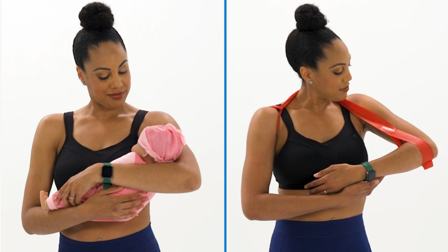-
 This is an interactive course that will teach you how to identify faulty alignment and movement patterns in the knee by analyzing patient posture and movement. You will learn how to use components of the movement system to classify patients with movement faults and mechanical knee pain. Based on movement classifications, you will hypothesize mobility and muscle performance deficits contributing to a patient's symptoms. You will integrate symptom modification procedures into your interventions and learn how to restore optimal posture and movement of the knee.
This is an interactive course that will teach you how to identify faulty alignment and movement patterns in the knee by analyzing patient posture and movement. You will learn how to use components of the movement system to classify patients with movement faults and mechanical knee pain. Based on movement classifications, you will hypothesize mobility and muscle performance deficits contributing to a patient's symptoms. You will integrate symptom modification procedures into your interventions and learn how to restore optimal posture and movement of the knee. -
 This is an interactive course that will teach you how to identify faulty scapular alignment and movement patterns in the shoulder by analyzing patient posture and movement. You will learn how to use components of the movement system to classify patients with scapular movement faults and mechanical shoulder pain. Based on movement classifications, you will hypothesize which mobility and muscle performance deficits are contributing to a patient's symptoms. You will integrate symptom modification procedures into your interventions and learn how to restore optimal posture and movement of the scapula.
This is an interactive course that will teach you how to identify faulty scapular alignment and movement patterns in the shoulder by analyzing patient posture and movement. You will learn how to use components of the movement system to classify patients with scapular movement faults and mechanical shoulder pain. Based on movement classifications, you will hypothesize which mobility and muscle performance deficits are contributing to a patient's symptoms. You will integrate symptom modification procedures into your interventions and learn how to restore optimal posture and movement of the scapula. -
 This is an interactive course that will teach you how to identify faulty humeral alignment and movement patterns in the shoulder by analyzing patient posture and movement. You will learn how to use components of the movement system to classify patients with humeral movement faults and mechanical shoulder pain. Based on movement classifications, you will hypothesize mobility and muscle performance deficits contributing to a patient's symptoms. You will integrate symptom modification procedures into your interventions and learn how to restore optimal posture and movement of the humerus.
This is an interactive course that will teach you how to identify faulty humeral alignment and movement patterns in the shoulder by analyzing patient posture and movement. You will learn how to use components of the movement system to classify patients with humeral movement faults and mechanical shoulder pain. Based on movement classifications, you will hypothesize mobility and muscle performance deficits contributing to a patient's symptoms. You will integrate symptom modification procedures into your interventions and learn how to restore optimal posture and movement of the humerus. -
 This course will teach you how to identify movement patterns, faulty alignment, and muscle imbalances in the lumbar spine by analyzing patient movement. You will learn how to use components of the movement system to classify patients with mechanical low back pain. Based on movement classifications, you will utilize corrective exercises to restore normal patient movement.
This course will teach you how to identify movement patterns, faulty alignment, and muscle imbalances in the lumbar spine by analyzing patient movement. You will learn how to use components of the movement system to classify patients with mechanical low back pain. Based on movement classifications, you will utilize corrective exercises to restore normal patient movement.
